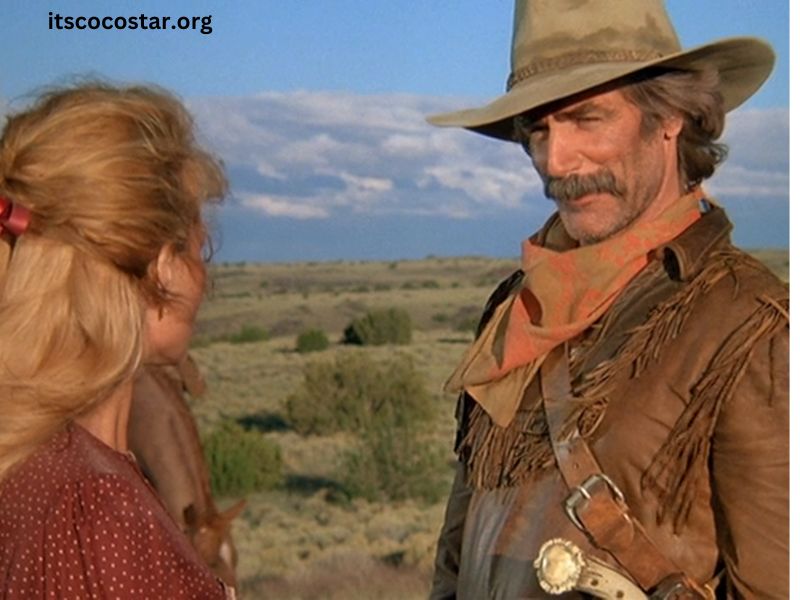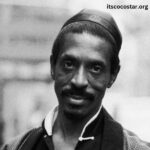The Quick and the Dead is a 1987 American Western television film that brings together a compelling narrative and an impressive cast. Directed by Robert Day and based on the novel by Louis L’Amour, this film is a classic example of the Western genre, filled with action, drama, and a touch of romance. Unlike the more famous 1995 film of the same name, this version has a unique storyline and an ensemble cast that delivers powerful performances. This article will delve into the details of the cast, exploring their roles, contributions, and the impact of their performances on the overall success of the film.
1. Sam Elliott as Con Vallian
At the forefront of The Quick and the Dead is Sam Elliott, who plays the character Con Vallian. Elliott’s portrayal of Vallian is one of the key highlights of the film. With his deep voice, rugged good looks, and an undeniable screen presence, Elliott embodies the quintessential Western hero. Con Vallian is a mysterious and stoic drifter who becomes the protector of a pioneer family. His character is complex, blending toughness with a deep sense of honor and loyalty.
Elliott, already well-known for his roles in Westerns, brought a level of authenticity to the role that few others could have achieved. His performance as Vallian is both intense and nuanced, capturing the essence of a man hardened by the frontier yet still capable of compassion. This role further solidified Elliott’s reputation as one of the great Western actors of his generation.
2. Tom Conti as Duncan McKaskel
Tom Conti plays Duncan McKaskel, the head of the pioneer family that Vallian helps protect. Conti, a Scottish actor known for his versatility, brings a different kind of energy to the film. His character, Duncan, is a former schoolteacher who moves west with his wife and son in search of a better life. Unlike the typical Western hero, Duncan is not a man of violence. Instead, he represents the everyman who is forced to confront the harsh realities of the frontier.
Conti’s portrayal of Duncan McKaskel is marked by a sense of vulnerability and quiet strength. He is a man who, despite his lack of experience in the rugged West, is determined to protect his family and make a new life for them. Conti’s performance provides a strong contrast to Elliott’s Vallian, highlighting the differences between the two men and their approaches to the challenges they face.
3. Kate Capshaw as Susanna McKaskel
Kate Capshaw takes on the role of Susanna McKaskel, Duncan’s wife. Capshaw’s Susanna is a woman of great resilience and inner strength, characteristics that are essential for survival in the unforgiving environment of the frontier. Her character is both nurturing and fiercely protective of her family, embodying the spirit of the pioneer women who played a crucial role in the westward expansion.
Capshaw, who would later become widely known for her role in Indiana Jones and the Temple of Doom, delivers a performance that is both grounded and emotionally compelling. She brings a warmth and depth to Susanna that makes her one of the film’s most relatable characters. Her chemistry with both Conti and Elliott helps to create the emotional core of the film, adding layers to the relationships between the characters.
4. Kenny Morrison as Tom McKaskel
Playing the role of Tom McKaskel, the young son of Duncan and Susanna, is Kenny Morrison. Tom is a pivotal character in the film, representing the innocence and hope of the future. Morrison, a child actor at the time, delivers a performance that is both earnest and convincing. His interactions with Sam Elliott’s Vallian are particularly noteworthy, as they highlight the bond that forms between the seasoned gunslinger and the impressionable boy.
Morrison’s portrayal of Tom adds a layer of emotional depth to the film, as viewers see the dangers of the West through the eyes of a child. His character’s journey from innocence to a more hardened understanding of the world around him mirrors the experiences of many young people in the frontier, making his role an important aspect of the narrative.
5. Matt Clark as Doc Shabitt
Matt Clark, a veteran character actor with a long list of film and television credits, plays the role of Doc Shabitt. Doc is a secondary but significant character in the film, representing the lawlessness and unpredictability of the West. Clark’s portrayal of Doc is memorable, adding a touch of menace and unpredictability to the film. His character serves as a reminder of the dangers that lurk around every corner in the frontier.
Clark’s ability to bring depth to even the most minor roles is evident in The Quick and the Dead. His performance as Doc Shabitt helps to create a sense of unease and tension in the film, contributing to the overall atmosphere of danger and uncertainty that permeates the story.
6. Patrick Kilpatrick as The Ute
Patrick Kilpatrick plays the role of The Ute, a Native American character who plays a crucial part in the story’s development. Kilpatrick, known for his roles in various action films and TV shows, brings a sense of authenticity and intensity to the role. The Ute’s interactions with the main characters add a layer of complexity to the film, highlighting the often tense and complicated relationships between settlers and Native Americans during this period.
Kilpatrick’s performance is marked by a strong physical presence and a quiet intensity. His portrayal of The Ute is both respectful and nuanced, avoiding the stereotypes that often plagued portrayals of Native Americans in Westerns of earlier decades. Instead, Kilpatrick brings a sense of dignity and depth to the character, making The Ute a memorable part of the film.
7. Del Shores as Race Sloan
Del Shores plays the role of Race Sloan, one of the antagonists in the film. Sloan is a character driven by greed and violence, representing the darker side of humanity that often emerges in the lawless environment of the frontier. Shores, who is also known for his work as a writer and director, delivers a performance that is both chilling and effective.
As Race Sloan, Shores embodies the type of villain that is common in Westerns—a man without a moral compass, willing to do whatever it takes to get what he wants. His performance adds a layer of tension and danger to the film, making him a formidable opponent for the protagonists.
8. Dan Vadis as Hank Mahoney
Dan Vadis, a former bodybuilder turned actor, plays the role of Hank Mahoney, another antagonist in the film. Mahoney is a brutish and menacing character, providing the physical threat that the protagonists must overcome. Vadis, known for his roles in sword-and-sandal films, brings a strong physical presence to the role, making Mahoney a formidable adversary.
Vadis’s performance as Hank Mahoney adds to the sense of danger and urgency in the film. His character is the embodiment of the lawlessness and violence that the McKaskel family must navigate in their quest for a better life.
9. R. G. Armstrong as Artie
R. G. Armstrong, a veteran character actor known for his work in Westerns, plays the role of Artie. Armstrong’s character, though a minor one, adds to the rich tapestry of the film’s setting. His portrayal of Artie is marked by the kind of authenticity that Armstrong brought to all of his roles, making even the smallest characters memorable.
10. Wilford Brimley as Uncle Billy
Wilford Brimley appears in a cameo role as Uncle Billy, adding another layer of authenticity to the film. Brimley, known for his distinctive voice and imposing screen presence, brings warmth and wisdom to the role. His brief appearance is enough to leave a lasting impression, contributing to the film’s overall sense of realism.
Conclusion
The Quick and the Dead (1987) is a film that stands out not only for its engaging storyline and classic Western themes but also for its exceptional cast. Each actor, from the leading roles to the minor characters, brings something unique to the film, creating a rich and immersive viewing experience. Sam Elliott, Tom Conti, Kate Capshaw, and the rest of the cast deliver performances that elevate the film, making it a memorable entry in the Western genre. Their portrayals of complex, multi-dimensional characters help to bring Louis L’Amour’s story to life, capturing the spirit of the American frontier and the people who shaped it.






